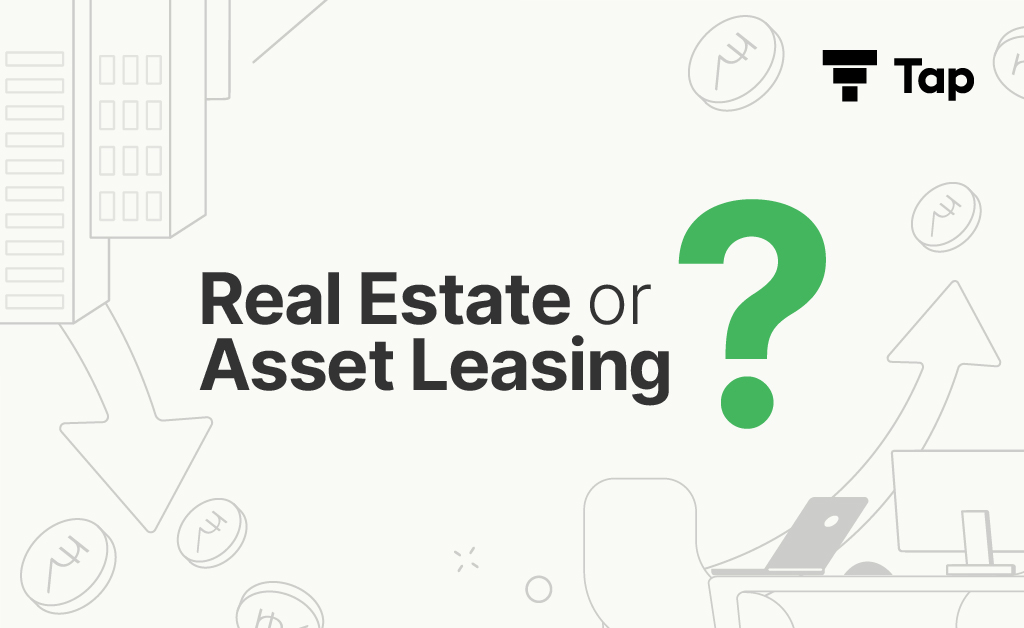Rethinking real estate and case of asset leasing

Commercial Real Estate and rental yield have been enduring favorites as fixed-income investment options in India. Real estate, contributing 7.3% to the Indian GDP according to the India Brand Equity Foundation (IBEF), has long been regarded as a secure and profitable investment. Despite its historical appeal, the real estate landscape is in a constant state of evolution.
Rethinking Real Estate Investment:
The conventional narrative of real estate investment is undergoing a transformation. Typically, a scenario unfolds with the purchase of a residential property at a substantial cost, financed by a significant loan, and leased for a modest monthly income. However, with escalating property prices, stagnant rental yields, and the opportunity cost of potential alternative investments, the logical approach begins to favor divesting from underperforming real estate assets.
In a hypothetical scenario, a property valued at ₹60 lakh with a ₹40 lakh loan incurring an EMI of ₹35,000 generates a rent of ₹15,000, resulting in a yield of 2.50%. In contrast, alternative investments such as a 5-year fixed deposit, ultra short-term debt funds, and conservative hybrid mutual funds showcase significantly higher returns, prompting investors to reconsider their real estate holdings. The debate around land value appreciation is more prevalent in urban cities, necessitating a lengthy investment period for substantial returns.
Challenges in the Real Estate Market:
Despite being a popular investment choice, recent market trends and economic factors have cast doubts on the profitability of real estate. The Reserve Bank of India (RBI) raising interest rates to combat inflation has made borrowing money for commercial real estate investments more expensive, diminishing potential returns. Additionally, rising vacancy rates, especially in Tier 2 and Tier 3 cities, are prolonging the time to find tenants and generate rental income, creating challenges for retail investors.
Introduction to Asset Leasing:
Amidst these challenges, asset leasing emerges as a breath of fresh air for investors seeking flexibility and potentially higher profits than traditional real estate. Asset leasing involves the rental or leasing of assets by businesses instead of outright purchase. It is a financial arrangement where one party, the lessor, owns an asset and grants another party, the lessee, the right to use that asset for a specific period in exchange for regular lease payments.
For instance, a startup needing laptops can lease them through a platform like Tap Invest, inviting investments from multiple retail investors who can enjoy fixed payouts and an IRR of up to 19% on their investment over a specified tenure.
Driving Asset Leasing Growth:
- High Returns: Users are generating 18-20% returns in IRR through Asset Leasing.
- Adaptability: Asset leasing offers adaptability, meeting both short-term financial goals and fostering long-term wealth accumulation.
Risks Associated with Asset Leasing:
Despite its benefits, asset leasing is not without risks. The low investment nature of asset leasing makes it susceptible to default in lease payments by the lessee. Additionally, leased assets may not be as liquid as more traditional investments, posing challenges in finding buyers quickly, especially in niche or specialized markets.
Conclusion:
As we conclude our exploration of asset leasing and real estate investment, readers are encouraged to consider the role of this innovative investment strategy in their portfolios. While alternative investments like asset leasing present opportunities for higher returns and portfolio diversification, it’s essential to balance these advantages with an awareness of associated risks.
FAQs On Rethinking Real Estate and Case of Asset Leasing:
- What is the conventional approach to real estate investment, and why is it being reconsidered?
The traditional approach involves purchasing a property, financing it with a loan, and leasing it for rental income. However, stagnant rental yields and escalating property prices are prompting investors to reassess the profitability of this strategy.
- What are some alternative investment options to real estate?
Alternative investments such as fixed deposits, ultra short-term debt funds, and conservative hybrid mutual funds offer potentially higher returns compared to underperforming real estate assets.
- What is asset leasing, and how does it differ from traditional real estate investment?
Asset leasing involves renting or leasing assets instead of outright purchase. It offers flexibility and potentially higher profits, as investors can enjoy fixed payouts and returns without the burden of property ownership.
- How does asset leasing work in practice?
In asset leasing, one party (the lessor) owns an asset and grants another party (the lessee) the right to use that asset for a specific period in exchange for regular lease payments. Platforms like Tap Invest facilitate asset leasing, allowing investors to participate in leasing arrangements and earn returns.
- What are the benefits of asset leasing?
Asset leasing offers high returns, adaptability to short-term and long-term financial goals, and diversification opportunities for investors.
- What risks are associated with asset leasing?
Risks include the potential for default in lease payments by the lessee and the relatively low liquidity of leased assets compared to more traditional investments.
- How should investors approach asset leasing as part of their investment portfolio?
Investors should carefully consider the potential returns and risks of asset leasing, balancing the advantages with an awareness of associated challenges. Diversification and due diligence are key factors in mitigating risks and maximizing returns in asset leasing investments.
